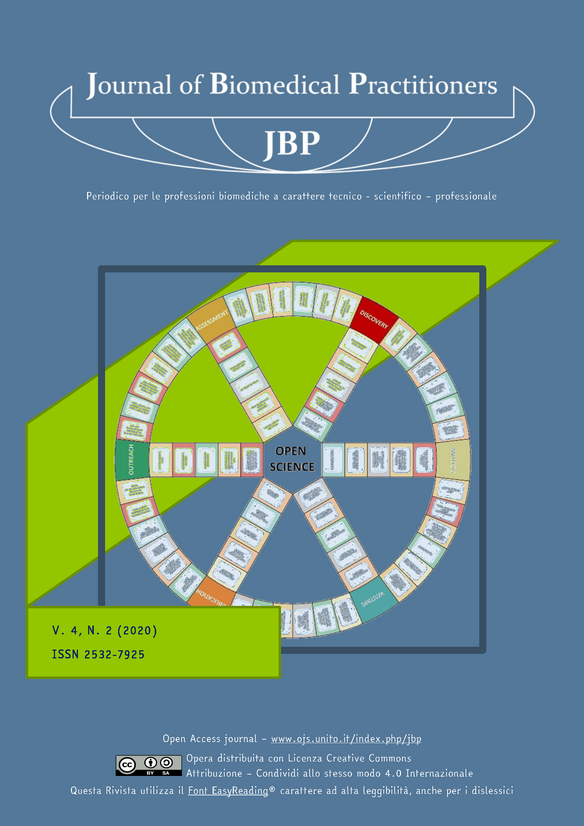Come scrivere un articolo originale - o una tesi sperimentale - nell’ambito della ricerca scientifica
Contenuto principale dell'articolo
Abstract
Il presente lavoro si pone come documento di sintesi per tutti i professionisti o studenti che per la prima volta si confrontano con l’ambito della ricerca scientifica. L’articolo analizza il modello predominate nella ricerca: la struttura Introduction-Methods-Results-and-Discussion (IMRaD). Inoltre, al suo interno, vengono analizzate anche quelle sezioni che ormai caratterizzano il formato della ricerca quali: il titolo della ricerca, il suo riassunto e la corretta citazione nelle note bibliografiche. Infine per gli studenti che applicano la struttura IMRaD ad una tesi sperimentale lo schema con cui questa si adatta alla stessa.
Downloads
Dettagli dell'articolo
Gli autori mantengono i diritti sulla loro opera e cedono alla rivista il diritto di prima pubblicazione dell'opera, contemporaneamente licenziata sotto una Licenza Creative Commons - Attribuzione che permette ad altri di condividere l'opera indicando la paternità intellettuale e la prima pubblicazione su questa rivista.
Riferimenti bibliografici
[2] Gemayel R. How to write a scientific paper. FEBS J. 2016;283(21):3882-3885.
[3] Liumbruno GM, Velati C, Pasqualetti P, Franchini M. How to write a scientific manuscript for publication. Blood Transfus. 2013;11(2):217-26
[4] Alexandrov AV. How to write a research paper. Cerebrovasc Dis. 2004;18(2):135-8.
[5] Cuschieri S, Grech V, Savona-Ventura C. WASP (Write a Scientific Paper): How to write a scientific thesis. Early Hum Dev. 2018;127:101-105
[6] Day RA. The origins of the scientific paper: the IMRAD format. AMWA Journal. 1989;4(2):16–18.
[7] Reporting guidelines for main study types. https://www.equator-network.org/reporting-guidelines/, consul-tato il 24 ottobre 2020.
[8] Euser AM, Zoccali C, Jager KJ, Dekker FW. Cohort Studies: Prospective versus Retrospective. Nephron ClinPract. 2009;113(3):214-217.
[9] García-Berthou E, Alcaraz C. Incongruence between test statistics and P values in medical papers. BMC Med Res Methodol. 2004;4(13):1-5.
[10] GünelKaradeniz P, Uzabacı E, AtışKuyukS, et al. Statistical errors in articles published in radiology journals. DiagnIntervRadiol. 2019 ;25(2):102-108.
[11] Franzblau LE, Chung KC. Graphs, tables, and figures in scientific publications: the good, the bad, and how not to be the latter. J Hand Surg Am. 2012;37(3):591-596.
[12] Schriger DL, Sinha R, Schroter S, et al. From submission to publication: a retrospective review of the tables and figures in a cohort of randomized controlled trials submitted to the British Medical Journal. Ann Emerg Med. 2006;48(6):750-756.
[13] TM Annesley. Show Your Cards: The Results Section and the Poker Game. Clin Chem. 2010 Jul;56(7):1066-1070
[14] Cohen HW. P values: use and misuse in medical literature. Am J Hypertens. 2011;24(1):18-23.

